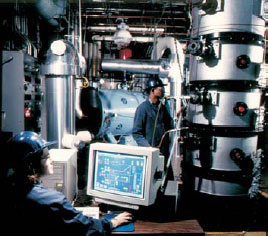What’s in Store for CO2?
Michael Gerbis, President of The Dephi Group, is at the UN Climate Change Conference and spoke Thursday at the Parallel Event on CO2 Capture & Storage. He shared a few ideas on the subject with “Canada: Daily Highlights.”
There’s a lot of talk around town about what to do with all the CO2 we’re producing – some say we need to be more efficient, others say we need to shift our economy away from fossil fuels to renewables. Both of these options make a lot of sense, but they’ll take time…so what do we do in the interim, as we continue to spew billions of tonnes of CO2 in atmosphere? Expert scientists, industry and government officials are saying “why not capture it and then put it in the ground where the majority of CO2 originated as coal, oil and natural gas?”
 CO2 sequestration or more literally CO2 capture and storage involves:
CO2 sequestration or more literally CO2 capture and storage involves:
- Collecting CO2 emissions before they can enter the atmosphere through a variety of pre- and post-combustion techniques; and
- Injecting the CO2 into stable rock formations thousands of meters below the ground such as depleted oil and gas reserves or salt caverns.
While some challenges still exist (e.g. cost of the process is still relatively high, potential for leakage unknown), it is technically feasible now and the global opportunity is huge (> 1000 gigatonnes of CO2 ). In fact, several pilot and operational CO2 capture and storage projects already exist in many countries including Canada (Weyburn Saskatchewan), Norway (North Sea) and the United States. Other benefits of this practice include:
- Job creation and the opportunity for enhanced oil and gas recovery;
- Secondary revenue stream as captured and stored CO2 can be converted into a tradeable commodity;
- Enhanced air quality as these processes tend to remove other potentially harmful pollutants.
In the end, carbon capture and storage may buy us time as we slowly move to a more sustainable and less carbon-intensive world, by allowing us the use of fossil fuels while minimizing their effect on the environment.

Figure 1.1: Representation of the various ways of storing CO2 in sedimentary basins (modified from Bachu, 2001).
Related Links:





